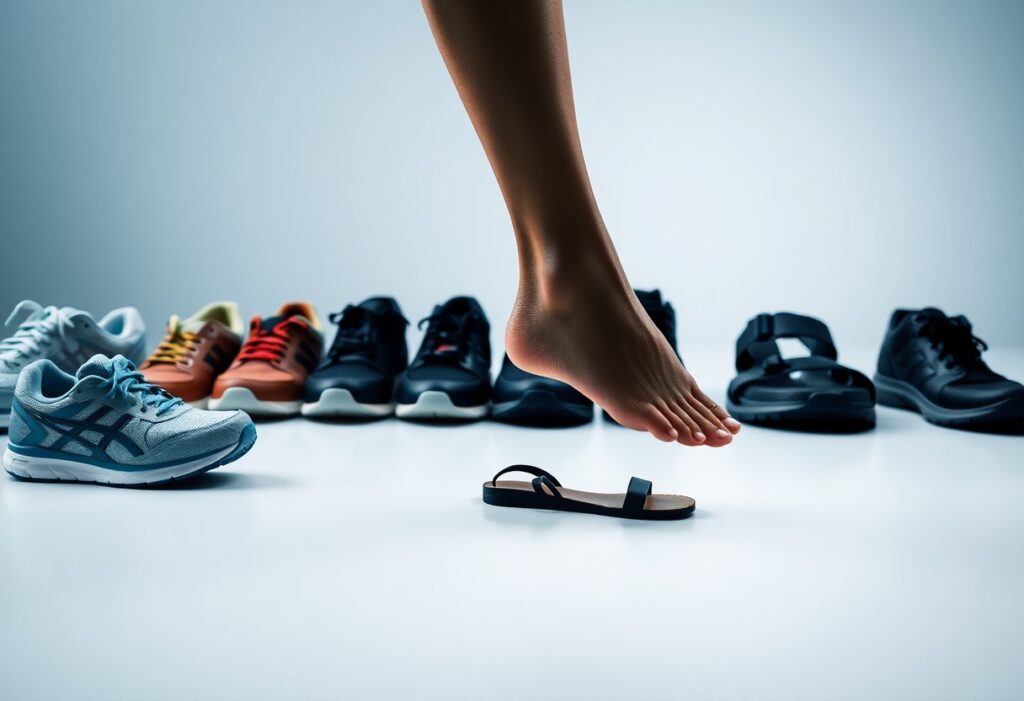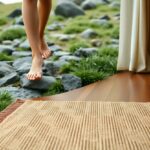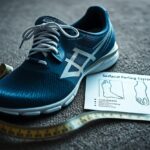
When it comes to maintaining optimal foot health, the choice of footwear plays a critical role. Many people are under the impression that shoes with added cushioning and support are the best for alleviating foot discomfort. However, renowned podiatrist Dr. Alissa Kuizinas from Massachusetts highlights a concerning trend: traditional shoes may actually be detrimental to your foot health. She advocates for barefoot shoes or minimalistic footwear, which can promote stronger and healthier feet. By selecting shoes that allow your feet to move naturally, you can significantly reduce the risk of developing common foot problems and improve your overall foot wellness.
Recognizing the Hidden Risks of Traditional Footwear
While traditional shoes might provide temporary relief from foot pain, they often exacerbate existing conditions and introduce new complications. Dr. Alissa Kuizinas points out that the $133 billion shoe industry tends to prioritize style and profit over genuine foot health. This design philosophy can result in shoes that constrict and weaken your feet over time. This dependency on conventional footwear can create a vicious cycle, ultimately undermining your overall foot well-being and leading to long-term complications.
How the Footwear Industry Misses the Mark on Foot Health
The fundamental issue lies in the shoe industry’s flawed approach to addressing foot health, which often revolves around integrating exaggerated cushioning, excessive support, and rigid structures into shoe designs without addressing the root causes of discomfort. Such strategies can inadvertently encourage a reliance on traditional shoes that may worsen your foot health over time, leading to a multitude of complications that could have been easily prevented with better footwear choices.
Uncovering the Design Flaws of Conventional Shoes
Many traditional shoe designs feature narrow toe boxes, stiff soles, and overly cushioned interiors that can restrict natural foot movement, resulting in weakened and dysfunctional feet. Dr. Kuizinas argues that footwear should primarily serve to protect your feet from external elements while allowing for unrestricted movement. An ideal shoe should emphasize natural foot function and incorporate minimalist features like wide toe boxes, flexible and flat soles, and limited cushioning to promote optimal foot health.
By choosing barefoot shoes or minimalistic options, you can proactively strengthen your feet and enhance your overall foot health. Dr. Kuizinas promotes a minimalist philosophy where the use of as little shoe as possible allows your feet to function naturally and move freely, which is essential for maintaining robust foot mechanics.
The Vital Importance of Allowing Natural Foot Movement
Wearing shoes that inhibit your foot’s ability to move freely can lead to a range of foot issues and discomfort. Evaluating the impact of your footwear on your overall foot health and comfort levels is crucial for preventing future problems.
Evaluating the Impact of Footwear on Mobility
To understand how your shoes affect your foot’s natural movement, it’s essential to analyze the specific design features and characteristics of your footwear. Traditional shoes often include cushioning and support elements that can actually hinder your foot’s natural movement, leading to weak and dysfunctional feet over time. This limitation may hinder your feet from developing the necessary strength and flexibility to function optimally.
Reaping the Benefits of Natural Foot Mobility
Allowing your feet to move naturally offers extensive benefits, as strong feet are fundamental to overall foot health. By selecting minimalistic shoes or barefoot footwear, you enable your feet to perform as nature intended, fostering strength and resilience.
Movement is critical for developing strong feet. When confined by conventional shoes, you increase your risk of developing various foot problems and discomfort. On the other hand, embracing minimalistic shoes or barefoot options can greatly enhance your foot health by facilitating natural movement and supporting strength-building. By choosing the right footwear, you can reduce the risk of foot issues and boost your overall foot wellness.
Understanding the Principles of Functional Footwear
Comprehending the concept of functional footwear is essential, as these shoes prioritize both foot health and natural movement. Functional shoes are specifically engineered to allow your feet to operate as they are meant to, eliminating the need for excessive support or confinement.
Defining Key Characteristics of Functional Shoes
After researching and trying out various shoe styles, you will notice that functional footwear has distinct characteristics, including a wide toe box, flat and flexible soles, and minimal cushioning. These features enable your feet to move freely and naturally, which promotes stronger and more efficient foot mechanics.
Enhancing Foot Health Through Functional Footwear
Wearing functional shoes presents numerous benefits, such as improved foot strength, a reduced risk of injury, and enhanced overall foot health. These shoes allow your feet to function as they were originally designed, paving the way for stronger feet and better balance in your daily activities.
In essence, functional footwear is crafted to support your feet without imposing unnecessary limitations, enabling them to move and flex naturally. This design philosophy not only promotes optimal foot health but also minimizes the likelihood of developing foot ailments. By opting for functional shoes like barefoot shoes or minimalistic options, you actively encourage healthy foot function and reduce the risk of foot pain and injuries. Transitioning to functional footwear may require time and gradual adaptation, but the long-term benefits for your foot health are priceless.
Recognizing the Essential Features of Functional Footwear
To achieve the best possible foot health, it’s vital to seek shoes equipped with specific features. Key characteristics to consider include:
- Wide toe box
- Flat and flexible soles
- Minimal cushioning and support
Being mindful of these attributes will greatly assist you in selecting footwear that encourages healthy foot function and support.
The Importance of Wide Toe Boxes and Flexible Soles
A critical component of functional shoes is a wide toe box, which allows your toes to spread out naturally. This design helps to prevent toe jamming and other discomfort-related issues that can lead to chronic foot pain.
The Necessity of Minimal Cushioning and Support
In addition to a wide toe box, functional shoes should also incorporate minimal cushioning and support. This design allows your feet to flex and move naturally while strengthening foot muscles, thereby reducing the risk of foot issues.
It’s important to emphasize that minimalistic footwear, including barefoot shoes, can significantly improve your foot health by enabling your feet to function freely. By choosing shoes with minimal cushioning and support, you can enhance muscle strength in your feet and decrease the chances of injuries. This strategic approach not only improves your overall foot health but also lessens the likelihood of experiencing chronic pain. Thus, prioritize shoes that allow your feet to move naturally without excessive cushioning or support.
Transitioning to Functional Footwear: A Step-by-Step Guide
Having acknowledged the significance of functional footwear, it’s time to begin your transition. Contrary to the misconception that more cushioning and support equates to better comfort, it’s essential to opt for minimalistic shoes or barefoot shoes that promote your feet’s natural functioning.
Practical Tips for Adopting Functional Footwear
Even if you have reservations, start incorporating functional shoes into your daily routine with these practical suggestions:
- Begin with short walks and gradually increase the distance
- Choose shoes that feature a wide toe box and flat soles
- Opt for minimal cushioning and support
The key is to give your feet ample time to adjust to the new footwear while also strengthening the muscles in your feet.
Importance of Patience and Gradual Adaptation
Transitioning to functional footwear requires patience and a gradual approach. Shoes that are overly minimalist can lead to discomfort and pain if your feet are not accustomed to them. Taking your time is crucial, allowing your feet to acclimate to the new footwear.
Footwear options like barefoot shoes or minimalistic shoes can be incredibly beneficial for your foot health, but it’s important to introduce them slowly. Overuse or incorrect sizing can lead to injuries or ongoing discomfort. The ultimate goal is to strengthen your foot muscles while enhancing your overall foot health, so approach this transition with care and patience. The rewards will be substantial—anticipate improvements in balance, reduced pain, and stronger feet.
Building Strong, Functional Feet for Lifelong Health
Even in a society where shoes with excessive cushioning and support are prevalent, you can cultivate strong and functional feet by making informed footwear choices.
The Significance of Foot Strength in Overall Health
Alongside other health factors, foot strength plays a pivotal role in your overall well-being, affecting your balance, posture, and movement capabilities.
Contributions of Functional Footwear to Strong Feet
Functionally designed shoes with a wide toe box, flat and flexible soles, and minimal cushioning are essential for developing strong feet, as they facilitate natural movement.
Indeed, wearing functional shoes or barefoot shoes can markedly assist in building stronger foot muscles and improving your overall foot health. By allowing your feet the freedom to move and operate naturally, you can reduce the risk of foot issues and optimize your balance and stability. As you transition to minimalistic shoes, you should expect to see enhancements in your walking technique and overall well-being.
By actively taking control of your foot health, you can choose footwear that supports your feet’s natural functions rather than hinders them. Opting for barefoot shoes or minimalistic options that allow your feet to move freely will promote strength development over time. As a result, you’ll enjoy increased stability and comfort during various activities. Start your journey by seeking shoes with a wide toe box, flat and flexible soles, and minimal cushioning and support, and practice patience as you transition to a more natural walking style.
The Article A Podiatrist’s Guide to How Shoes Affect Your Foot Health appeared first on My Shoes Finder
The Article How Shoes Impact Your Foot Health: A Podiatrist’s Insights Was Found On https://limitsofstrategy.com





